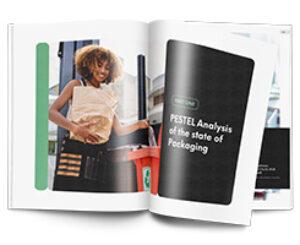How Consumers Are Driving Packaging Changes

For many consumers, purchases are a package deal. One key takeaway from Mintel’s new report on global packaging trends is the influence of today’s end users.
“Consumers will look to brands to help them overcome economic-induced stresses with products and packaging that mesh with purchasing abilities and reflect value without compromise. Offering packaging that represents financial value propositions, while not compromising quality, convenience, freshness, safety, and environmental responsibility, will be a differentiator in 2023 and beyond,” summed up David Luttenberger, global packaging director at Mintel.
[Read more: "Sustainable Packaging Sees Improvements in Functionality"]
Mintel used a special analysis called PESTEL to look at the many factors impacting the packaging industry and package choices that resonate with consumers. From an industry perspective, those factors include supply chain pressures, war in Ukraine, socioeconomic issues, inflation and sustainability.
Consumers, meanwhile, are impacted and influenced by many of the same factors. “Economic uncertainty and the associated rising cost of goods have forced consumers to rethink budgets and discretionary spending. Across categories, brands are tapping messaging, technology, and retail strategies to show consumers how packaging can stretch a budget,” explained Luttenberger, adding, “Offering packaging that represents financial value propositions, while not compromising quality, convenience, freshness, safety, and environmental responsibility, will be a differentiator in 2023 and beyond.”
In addition to value, consumers are weighing responsibility when they look at packaging. Responsible packaging spans sustainability issues like water and land use as well as social priorities such as ethical sourcing and equity, Mintel’s research shows. Brands can take a variety of steps to meet such consumer concerns; a food brand, for example, could provide on-package energy tips such as avoiding oven preheating, while a household brand could change its package from a plastic bottle to a paperboard tube.
Although they are bombarded with technology, consumers can be enticed by packaging technology that provides for more informed decisions and convenience, such as QR codes. As the report authors point out, “Brands and package manufacturers are marrying materials, components and digitally-enhanced technologies to create next-generation purchase and use experiences.” They caution that QR codes should link back to relevant information and incentives, not just used as a “gimmick.”
The report spotlighted a U.S.-based snack food company, Harvest Snaps, that used a QR code on a product to engage younger consumers. The code provided users with a way to create their own “snack-inspired music” directly through the popular TikTok social media platform.
As consumer-driven and industry-led trends spur innovations and changes in packaging, brands and retailers can also take note of the likelihood of more regulatory and legal action when it comes to sustainability. Mintel analysts recommend that brands and retailers stay attuned to current legislation, especially around plastics and PFAS (also known as “forever chemicals”) and be mindful of consumer pressures that may lead to additional bans.
The full report is available online.







